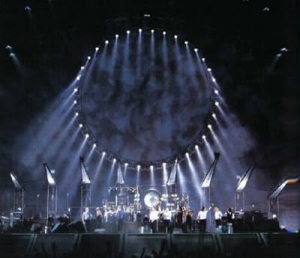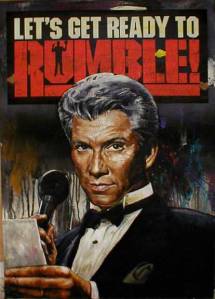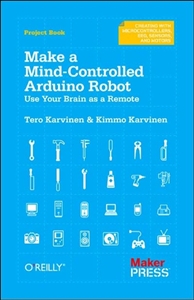Recently, I had the privilege of enjoying the final performance of a local production of A Chorus Line. It was produced by Woodminster Summer Musicals, and their venue, the Woodminster Amphitheater, is yet another stunning reason why Oakland is such an awesome place to live. August night, sun going down, ridiculous views, surrounded by trees, being entertained by highly-trained, talented people. Did I mention that they encourage you to bring your own beverages, without restriction?
Anyway, back to A Chorus Line. I had never seen any prior production or version, and didn’t know too much about it, so I was essentially experiencing the show for the first time. I guess this is the musical equivalent of somehow managing to have never seen Avatar. After all, this was the sixth longest running show in Broadway history. I won’t bore you with the details, but the five that are higher on the list essentially redefined the concept of “theatrical spectacle” for their respective time. Also, every single one of those other shows is based on or inspired by some well-known pre-existing work, such as a book or a movie, which basically provides instant cachet. Amazingly, neither is the case with A Chorus Line. I won’t rehash the historical significance and origins of the show, but I will share my impressions of experiencing it for the first time, almost 40 years after it opened on Broadway.
For those who are unfamiliar with this show, the entirety of the story occurs on-stage during an audition for positions in the ensemble (“the chorus”) of a hypothetical Broadway show. The characters are the auditioning dancers and the director/choreographer who is running the audition. That’s it. I don’t have a point of reference for how this show has been produced anywhere else, but I think it’s safe to say that this production’s minimalist scenic design was fairly typical. The set literally consists of an empty stage backed by mirrors. With the exception of a few technical modifications that occur during the course of the show, there are no set-changes to speak of. No windows, no doors, no “furniture”, no nothing. One even gets the sense that the action is approximately occurring in real-time. In other words, while there might be some amount of time compression, there isn’t a sense of action occurring tomorrow or next week. It’s pretty much all happening right in front of you. The plot is very straightforward: the director needs to cull the group down to four men and four women, and he uses the audition to get the dancers to open up to him. The show is basically the chronicle of that session, told through dialogue, song, and dance. It’s like the reality show of musicals, except about 20 years before the term lamentably emerged in widespread use.
Doesn’t sound very interesting, does it?

Sorry, inside joke, you had to be there
But it is. And that’s what I’m trying to figure out and explore. There are so many characters on-stage that it’s hard to identify any as “main.” True, quantitatively some necessarily get more lines than others, but it’s hard to put your finger on any subset of characters and assign their motives and struggles as the lifeblood of the story. What about the director, you ask? Sure, he’s in every single “scene,” except he spends 85% of the time off-stage speaking to the dancers. Arguably, the entire cast of characters, which essentially share a common motive (to get hired), is the “main character.” That might sound interesting in an abstract, postmodern, academic way, but is any of this entertaining?
Yes. And here’s why. The dancers are led to believe that being honest and open with the director represents their best shot at getting the job, and that’s exactly what they do. Whether they are saying or singing something sad or funny or painful or shallow or reflective, it all comes across as incredibly raw and honest and vulnerable, and therefore compelling. Because there isn’t much of a story to speak of, there isn’t any way for a first-time viewer to anticipate who will speak next, or what they will say, or what greater significance it will have. As a result, it’s very liberating to not have to “keep up” with myriad plot machinations, twists, and intrigues. You’re encouraged to just sit back and relax and listen to what each character is telling you, and if you’re not totally into it, no problem, there are about 20 other characters on stage, and someone new will be rotating in shortly.
For me, where the creative concept of the show came full circle and ultimately succeeded was oddly enough in the minimalist scenic design. Because there is almost nothing to distract you visually, you actually don’t sit back and relax. You give each character your full attention and listen to their story, because there are no other distractions or competitions for your attention. This is the immersive paradox I refer to in the title of this post. You are provided with so little “information” to absorb and even less “metadata” about how to process or anticipate what is being presented to you, yet somehow the effect is to actually draw you in even further. It is the opposite of being overwhelmed, yet you are. And it somehow allows the truth of what the characters are saying to hit home even harder.
 As I mentioned, I choose to interpret each character as a facet of a single conceptual main character, which I conceive as “the daring dreamer.” Each of these characters approaches their personal challenge from a different angle and has a different story to tell, but every single one of them shares a common drive to put it all on the line to realize their dream. Most are honest about the fact that they’re not looking past the here and now, and some even have the courage to admit that this may not even be a stepping-stone to anything except professional disappointment. But that doesn’t stop them from dreaming. I believe that the mirrors, which arguably constitute the one “prop” in the entire show, intentionally reflect the audience back to itself as if to say, “This is you onstage.” I believe that the reason why people lined up for 15 years to see this show is that every person who watches it finds at least one character that speaks for them and challenges them to ask themselves, “Where is that daring dreamer that once was?” I know I did. Even if that resonance exists for only a handful of minutes, as represented by a single character, that feeling of being “spoken to” is powerful. That said, there may be any number of reasons why none of these characters truly speak to you, and that is at the heart of the beauty and mystery of art. But if the very notion of the daring dreamer is a hollow concept, then you may as well cancel your insurance and pack it in, because chances are, you’re already dead.
As I mentioned, I choose to interpret each character as a facet of a single conceptual main character, which I conceive as “the daring dreamer.” Each of these characters approaches their personal challenge from a different angle and has a different story to tell, but every single one of them shares a common drive to put it all on the line to realize their dream. Most are honest about the fact that they’re not looking past the here and now, and some even have the courage to admit that this may not even be a stepping-stone to anything except professional disappointment. But that doesn’t stop them from dreaming. I believe that the mirrors, which arguably constitute the one “prop” in the entire show, intentionally reflect the audience back to itself as if to say, “This is you onstage.” I believe that the reason why people lined up for 15 years to see this show is that every person who watches it finds at least one character that speaks for them and challenges them to ask themselves, “Where is that daring dreamer that once was?” I know I did. Even if that resonance exists for only a handful of minutes, as represented by a single character, that feeling of being “spoken to” is powerful. That said, there may be any number of reasons why none of these characters truly speak to you, and that is at the heart of the beauty and mystery of art. But if the very notion of the daring dreamer is a hollow concept, then you may as well cancel your insurance and pack it in, because chances are, you’re already dead.



















